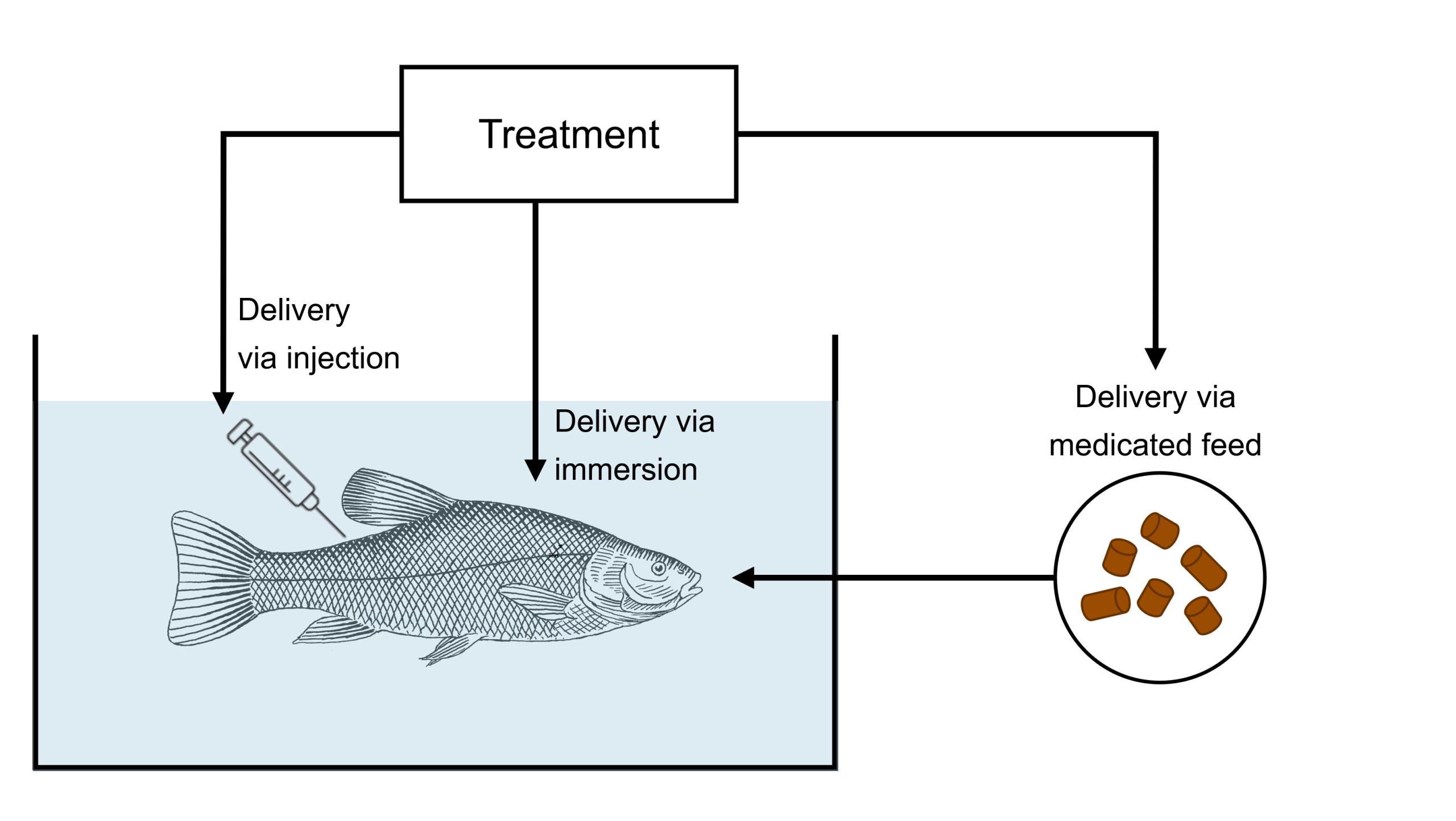7.0 Drugs, Pesticides, and Biologics for Aquatic Animals
7.6 How Is Treatment Administered?
There are three ways of administering chemotherapeutics to fish: immersion (or bath), injection, and oral. Administration must be done as stated on the label without diluting or further modifying the product.

Immersion
Immersion treatment involves the preparation of a small volume of medicated water in a separate container from that holding the fish. The fish are immersed in it for a period of time and then returned to their environment. It is advisable that the water to be medicated should be taken from the pond or tank containing the fish so that water qualities and temperature stresses are minimized.
Injection
In most clinical situations, it is best to sedate fish before injection to minimize injury and danger to the animal and person making the injection. Without this precaution, injury to the fish or operator is likely. Regarding positioning, the needle is best directed cranially under or between the scales; piercing the scale should be avoided. Some species will have fewer scales in certain regions that might suffice for the placement of the drug. Four general types of injections can be used:
- Intramuscular (IM): Given into the epaxial musculature, normally approximately midway between the mid-dorsal and lateral lines.
- Dorso-median sinus (DMS): This is a specific dorsal body technique given intramuscularly into the mid-dorsal line at the angle at the caudal margin of the cranial dorsal fin. Typically recommended for use on salmonids.
- Intracoelomic (IC): Given into the midventral line, just cranial to the vent. Used for several injectable medications such as antibiotics, spawning aids, or vaccines.
- Intracardiac: The cardiac stick is available for sample withdrawal but is a risk to the patient. Larger fish may tolerate this approach, but smaller fish tend to die too often from cardiac disruption. With enough experience in certain species, this may be useful, but overall, it is more of a “last-ditch” strategy to obtain a blood sample for novices, in this author’s opinion.
Oral Medication
Oral administration is a route in which drugs are administered via the mouth. Medicated feed is typically in pellet form, of the floating or sinking variety, and is thrown upon the surface of the water, termed broadcast feeding. Antibacterial and antiparasitic drugs are commonly used in feed to be administered orally. There are three methods of applying medication to feed:
- Pelleted medicated feed: Adding the medicinal product to the feed mix before final formulation and pelleting. Usually used for more heat-stable drugs.
- Surface-coating pelleted feed: Medication is added to the pellet’s surface after extruding it by mixing with a fat or oil. It is commonly used as a means of medicating feed on fish farms. Whatever is used as a medication carrier must be palatable to the treated fish. Before treating the first time, a small trial is advised to avoid mixing a batch of unpalatable feed.
- Spray-medication of pelleted feed: Medication is sprayed directly onto the surface of the pelleted food. This process is typically used for small doses of sex hormones or concentrated medications, which are insoluble in water for practical purposes. This process is suitable for heat-labile medications because the drug is applied on the finished pellet or other processed forms.

